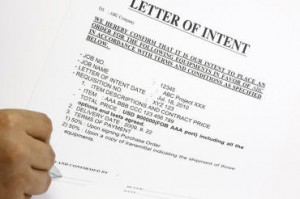 If you are planning to purchase a real estate and wondering about how to write a letter of intent to purchase, you are not alone. Many people are bound to make mistakes when they are writing this letter. A letter of intent to purchase is not something that should be taken lightly because this is one of those information that will be permanently recorded among the agreement papers. This letter is to demonstrate that the parties involved are serious about the sale and that they are ready to weed out potential problems. With that in mind, here are some valuable tips on drafting this letter.
If you are planning to purchase a real estate and wondering about how to write a letter of intent to purchase, you are not alone. Many people are bound to make mistakes when they are writing this letter. A letter of intent to purchase is not something that should be taken lightly because this is one of those information that will be permanently recorded among the agreement papers. This letter is to demonstrate that the parties involved are serious about the sale and that they are ready to weed out potential problems. With that in mind, here are some valuable tips on drafting this letter.
Tip 1: Make Sure the Letter is Non-binding
That letter you either copied from another website or wrote in a hurry can become your sale agreement if not carefully reviewed. To make sure that it is non-binding, be careful what to say and what not while writing this letter so the reader doesn’t get into an ambiguous situation. In other words, the letter of intent to purchase is a form of request from buyer to seller not to show the property to any other prospective buyer or enter into an agreement of sale until a specific date. This gives the buyer time to come up with a formal contract or make the final decision as well as make arrangements for financing. If the seller upon receiving this letter signs it, he or she is liable for paying any loss or damage to the buyer. Therefore, it is important that the buyer use the correct language in the letter.
Tip 2: Keep the Letter as Simple as Possible
A letter of intent to purchase should not disclose every intention of your deal. Instead, use it only to outline main points, terms, price, earnest money details and closing date. As much as possible, avoid legal language regarding rights and duties of the involved parties. These details are better left for contract negotiation phase.
Tip 3: Mention the Last date to Sign Your Letter of Intent
Include the date after which your terms and conditions become void. This means taking control of the timing of purchase from the start. Instead of sending a signed LOI and waiting for the seller to sign, specify a reasonable deadline to seal the deal.
Tip 4: Include Duration for Financing the Purchase
If you need to obtain financing for the purchase, indicate it in the letter. State that your purchase will me made upon obtaining financing within certain days after the contract is signed. Also, mention the approximate date for obtaining municipal approvals if any. State that your purchase will be contingent upon such approvals.
Tip 5: Let the Attorney Draft the Purchase Agreement
Drafting the letter is essential as much as writing it. Whoever writes the letter should make sure that it is drafted by the appropriate authority. While landlords insist on drafting the lease agreement for their properties through a notary, purchase or sale agreement should be drafted by an attorney, not the seller’s agent or broker.